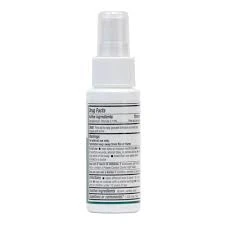Examples of Common Polycarboxylic Acids and Their Applications in Chemistry
Polycarboxylic acids are a category of organic compounds characterized by the presence of multiple carboxyl groups (-COOH) in their molecular structure. These acids play an essential role in various chemical processes, industrial applications, and biological systems. Here, we’ll explore some notable examples of polycarboxylic acids, their properties, and their uses.
One of the most common polycarboxylic acids is citric acid, a weak organic acid found abundantly in citrus fruits. Citric acid has three carboxyl groups and is widely used as a natural preservative and flavoring agent in the food and beverage industry. Its chelating properties allow it to bind metals, making it a valuable ingredient in cleaning products and cosmetics as well. Moreover, citric acid is involved in the citric acid cycle, a critical metabolic pathway in living organisms that aids in energy production.
Another significant example is tartaric acid, which contains two carboxyl groups and is primarily found in grapes. It is utilized in winemaking to stabilize wine and prevent crystallization of tartrate salts. Additionally, tartaric acid is often used in baking as a stabilizer for egg whites and as a leavening agent, contributing to the texture and volume of baked goods.
Malic acid, characterized by two carboxyl groups, can be naturally found in apples and other fruits. It is known for its sour flavor and is often employed in the food industry as an acidity regulator and flavor enhancer. Beyond culinary uses, malic acid has potential applications in energy metabolism and exercise performance, as it plays a role in the Krebs cycle.
polycarboxylic acid examples

Oxalic acid is another prevalent polycarboxylic acid, with two carboxyl groups. It is found in various plants, including spinach and rhubarb. While oxalic acid acts as a natural pesticide and contributes to plant defense mechanisms, it is often associated with harmful effects in high concentrations, such as kidney stone formation in humans when ingested in large amounts.
Lastly, aminopolycarboxylic acids like EDTA (ethylenediaminetetraacetic acid) possess multiple carboxyl groups along with amino groups
. EDTA is widely used in various applications, including metal ion chelation in medicine, water treatment, and as a stabilizing agent in cosmetics.In conclusion, polycarboxylic acids encompass a diverse group of compounds with significant relevance across multiple fields, from food and agriculture to health and industry. Their unique properties and versatile applications make them indispensable in both natural and synthetic processes, reflecting the importance of chemistry in our daily lives.
-
lk-319-special-scale-and-corrosion-inhibitor-for-steel-plants-advanced-solutions-for-industrial-water-systemsNewsAug.22,2025
-
flocculant-water-treatment-essential-chemical-solutions-for-purification-processesNewsAug.22,2025
-
isothiazolinones-versatile-microbial-control-agents-for-industrial-and-consumer-applicationsNewsAug.22,2025
-
scale-inhibitor-key-solutions-for-water-system-scale-preventionNewsAug.22,2025
-
organophosphonates-versatile-scale-inhibitors-for-industrial-water-systemsNewsAug.22,2025
-
scale-and-corrosion-inhibitor-essential-chemical-solutions-for-water-system-maintenanceNewsAug.22,2025





